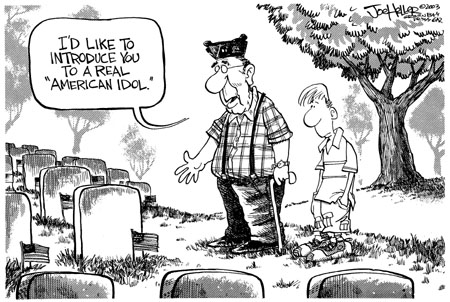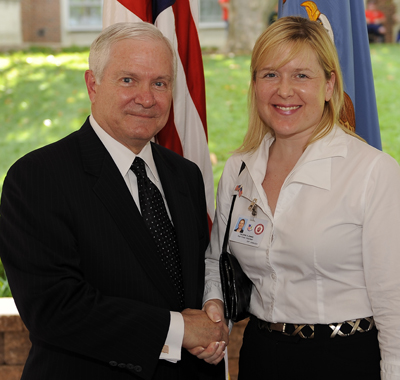Death By Stubbornness: What’s A Doctor To Do?
 Over the years that I’ve worked in acute inpatient rehab centers, I have been truly vexed by a particular type of patient. Namely, the stubborn patient (usually an elderly gentleman with a military or armed forces background). I know that it’s not completely fair to generalize about personality types, but it seems that the very nature of their work has either developed in them a steely resolve, or they were attracted to their profession because they possessed the right temperament for it. Either way, when they arrive in the rehab unit after some type of acute illness or traumatic event, it is very challenging to cajole them into health. I suspect that I am failing quite miserably at it, frankly.
Over the years that I’ve worked in acute inpatient rehab centers, I have been truly vexed by a particular type of patient. Namely, the stubborn patient (usually an elderly gentleman with a military or armed forces background). I know that it’s not completely fair to generalize about personality types, but it seems that the very nature of their work has either developed in them a steely resolve, or they were attracted to their profession because they possessed the right temperament for it. Either way, when they arrive in the rehab unit after some type of acute illness or traumatic event, it is very challenging to cajole them into health. I suspect that I am failing quite miserably at it, frankly.
Nothing is more depressing for a rehab physician than to see a patient decline because they refuse to participate in activities that are bound to improve their condition. Prolonged immobility is a recipe for disaster, especially in the frail elderly. Refusal to eat and get out of bed regularly can make the difference between life and death within a matter of days as leg clots begin to form, and infectious diseases take hold of a body in a weakened state. The downward spiral of illness and debility is familiar to all physicians, but is particularly disappointing when the underlying cause appears to be patient stubbornness.
Of course, the patient may not be well enough to grasp the “big picture” consequences of their decisions. And I certainly do not pretend to understand what it feels like to be elderly and at the end of my rope in regards to prolonged hospital stays. Maybe I’d want to give up and be left alone too. But it’s my job to get them through the tough recovery period so they can go home and enjoy the highest quality of life possible. When faced with a patient in the “wet cat” phase of recovery (I say “wet cat” because they appear to be as pleased to be on the rehab unit as a cat is to being doused against their will), these are the usual stages that I go through:

1. I explain the factual reasons for their admission to rehab and what our goals are. I further describe the risks of not participating in therapies, eating/drinking, or learning the skills they need to care for themselves with their new impairments.
2. I let them know that I’m on their side. I understand that they don’t want to be here, and that I will work with them to get them home as soon as possible, but that I can’t in good conscience send them home until it’s safe to do so.
3. I give them a projected discharge date to strive towards, with specific tasks that need to be mastered. I try my best to give the patient as much control in his care as possible.
4. I ally with the family (especially their wives) to determine what motivates them, and request their presence at therapy sessions if that seems fruitful rather than distracting. (Helpful spouse input: “Mike only wants to walk with me by his side, not the therapist.”)
5. I ask loved ones how they think the patient is doing/feeling and if there is anything else I can do to make his stay more pleasant. (Helpful input: “John loves ice cream. He hates eggs” or “John usually goes to bed at 9pm and gets up at 4am every day.”)
6. I meet with nursing and therapy staff to discuss behavioral challenges and discuss approaches that are more effective in obtaining desired results. (For example, some patients will always opt out of a task if you give them a choice. However, they perform the task if you state with certainty that you are going to do it – such as getting out of bed. “Would you like to get out of bed now, Mr. Smith?” will almost certainly result in a resounding “No.” Followed perhaps by a dismissive hand wave. However, approaching with a “It’s time to get out of bed now, I’m helping you scoot to the edge of the bed and we’re going to stand up on 3. One, two, three!” Is much more effective.)
7. If all else fails and the patient is not responding to staff, loved ones, or doctors, I may ask for a psychiatric consult to determine whether or not the patient is clinically depressed or could benefit from a medication adjustment. Typically, these patients are vehemently opposed to psychiatric evaluation so this is almost the “nuclear” option. Psychiatrists can be very insightful regarding a patient’s mindset or barriers to participation, and can also help to tease out whether delirium versus dementia may be involved, and whether the patient lacks capacity to make decisions for himself.
8. If the patient still does not respond to further tweaks to our approach to therapy or medication regimen, then I begin looking for alternate discharge plans. Would he be happier in a skilled nursing home environment where he can recover at a slower rate? Would he be amenable to an assisted living or long term care facility? (The answer is almost always a resounding “no!”) Is the patient well enough to go home with home care services and round-the-clock supervision? Does the family have enough support and can they afford this option?
9. At this point, after exhausting all other avenues, if the patient is still declining to move or eat or be transferred elsewhere, some sort of infection might set in. A urinary tract infection, a pneumonia, or bowel infection perhaps. Then the patient becomes febrile, is started on antibiotics, becomes weaker and less responsive, and is transferred to the medicine floor or higher level of care. Alternatively at this phase (if he is lucky enough not to become infected) the patient might have a cardiac event, stroke, blood clot with pulmonary embolus (especially if he is a large man), kidney failure, or develop infected pressure ulcers. Any of which can be cause for transfer to medicine. In short, if you stay in the hospital long enough, you can find a way to die there.
10. After much hand-wringing, angst, and generalized feelings of helplessness the wives and I review the course of events and ask ourselves if we could have done anything differently. “If I had acted like a drill sergeant, do you think he would have responded better?” I might ask. “No dear, that would only have made things worse.” She’ll reply. I’ll see how disappointed she is in his deterioration, staring off towards pending widowhood, engaging in self-blame and what-ifs (E.g. “If we had only had more money perhaps we could have taken him home with 24 hour nursing care until he was better…” “If I had cooked all his meals, maybe he would have gained enough strength to avoid the infection…” etc.) I try to be reassuring that none of this would have made a difference, myself reeling from the failure to get the patient home.
This 10 step process happens far more often than I’d like, and I certainly wish there were a way to head off the downward spiral with some kind of effective intervention. Would it help to have a volunteer unit of ex-military peer counselors in the hospital who could visit with my patients and help to motivate them to get better? (Operation “wet cat” perhaps?) Should I change my approach and put on my drill sergeant hat at the earliest stages of recovery to force these guys out of bed? Can educating younger law enforcement and military workers about illness help to prepare them to be more compliant patients one day?
I don’t know the cure for stubbornness, but it sure leaves a lot of widows in its wake.















